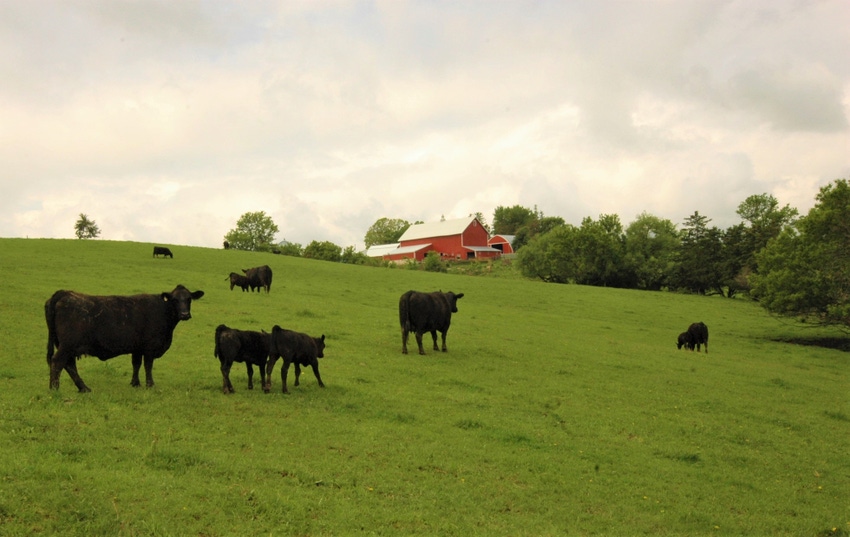Controlling internal parasites may improve beef carcass quality
Study shows extended-release dewormer can lead to lower feedlot morbidity and improved carcass quality.
April 29, 2019

Recent estimates put annual losses from internal parasites at $200 per cow/calf pair, so it’s no surprise that many research studies say controlling parasites offers one of the best returns on investment in the business, according to information from Certified Angus Beef (CAB).
A recent study from Iowa State University looked at a wide range of economic effects from using an extended-release dewormer compared to a traditional product. It found that the main differences were more marbling and a higher percentage of premium Choice carcasses in progeny from herds treated with the extended-release product, the announcement said.
For a master's degree thesis study, Claire Andresen set out to estimate the impact in cow/calf herds of a single injection of extended-release eprinomectin (100-150 days) versus one of typical-duration doramectin (14-28 days). The study would measure economically relevant production variables in these dewormed beef cows and calves as well as subsequent feedlot health, performance and carcass traits of calves, CAB said. The extended-release product costs four times as much, so the research aimed to determine if the extended-release product would be worth the extra expense.
Andresen, now a doctoral student at Oklahoma State University, worked with 13 spring- and fall-calving herd managers with nearly 1,800 cows across seven states. Animals were stratified within herds and assigned to one of the two treatments. In some herds, cows and calves were treated with both products by assignment, while in others, treating the cows meant that calves received the benefit indirectly, CAB said.
Reproductive end points, cow performance, bodyweight change, evidence of pinkeye and fly burdens were compared; the findings showed only a lower incidence of pinkeye in eprinomectin-treated cows, with no other differences in calves between the two treatments, the researcher found.
In fact, Andresen said there were few differences in any production measures, perhaps due to overall lack of clinical parasitism at any time point in any herd as measured by fecal egg counts. That left feedlot performance, but again, any differences were slight.
“Eprinomectin-dosed calves tended to have lower incidence of morbidity,” the study reported. “However, there were no differences in growth performance.” Andresen said that may stem from the lack of parasitic infection in the grazing phase.
Carcass traits were the one clear point of differentiation, according to CAB. Calves treated with eprinomectin during the preweaning phase had a greater marbling score by 20 points and a greater average quality grade.
Andresen and Dan Loy, director of the Iowa State Beef Center, concluded that the study showed that the use of an extended-release anthelmintic product can be worth the investment if a producer is aiming for premium quality targets.
“Producers know deworming will improve weight gain; that’s fairly well established,” said Loy, who was a co-advisor on the project with former Iowa State ruminant nutritionist Patrick Gunn. “I don’t think they always make the connection to the end product. That improvement in carcass value all the way through isn’t something most producers would necessarily be aware of. This study helps make that connection more apparent.”
Source: Certified Angus Beef, which is solely responsible for the information provided and is wholly owned by the source. Informa Business Media and all its subsidiaries are not responsible for any of the content contained in this information asset.
You May Also Like



